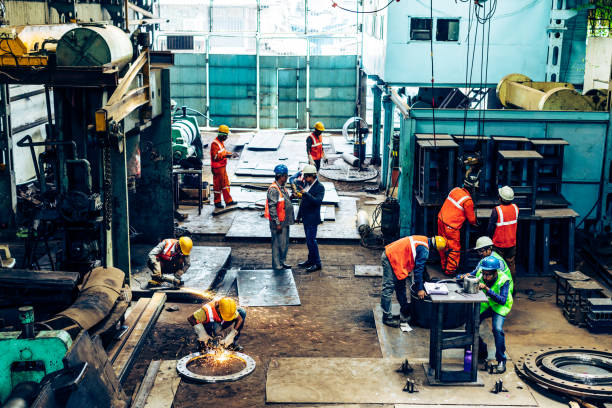Businesses continuously strive to optimize their operations and lower downtime in the quickly changing industrial world of today. Effective maintenance management is one essential component in achieving this objective. Advanced techniques like predictive maintenance are replacing more conventional methods of maintenance like reactive or preventative maintenance. The use of predictive maintenance tools has become a necessity for industries looking to reduce unplanned equipment failures, boost productivity, and save costs. This essay will go into the area of predictive maintenance tools, giving an overview, going over their advantages, and outlining a complete list of crucial industrial maintenance tools.
Recognizing Predictive Maintenance Instruments
Utilizing real-time data and cutting-edge analytics, predictive maintenance is a proactive maintenance method that foresees equipment breakdowns before they happen. Predictive maintenance tools can identify early warning signals of probable failures by continuously monitoring important factors like temperature, vibration, or energy usage. These tools analyze data patterns, spot abnormalities, and produce precise forecasts by using a variety of technologies, including as machine learning, artificial intelligence, and internet of things (IoT) devices. The knowledge gained enables maintenance staff to organize maintenance tasks more effectively, carry out timely interventions, and steer clear of expensive unscheduled downtime.
Blogaddas | CounterBuddies | onlinebiohub | motsvet | orthonail
Advantages of Predictive Maintenance Equipment
reducing downtime
Predictive maintenance tools help maintenance personnel handle possible problems before they develop into significant breakdowns by giving early warnings of equipment failures. This pro-active strategy reduces unscheduled downtime, guarantees continuous operation, and increases productivity.
Cost-saving measures
By concentrating resources on particular machines or components that need maintenance, predictive maintenance tools assist firms in maximizing their maintenance strategy. Companies can drastically reduce costs related with spare parts, labor, and equipment downtime by avoiding needless maintenance operations and minimizing the frequency of preventative maintenance.
Predictive maintenance tools can assist extend the lifespan of crucial industrial equipment by identifying and resolving underlying faults at an early stage. Regular monitoring and prompt action decrease the chance of significant failures, increasing the useful life of assets and postponing pricey replacements.
Increased Safety:
Defective machinery can seriously endanger the safety of workers and the working environment as a whole. Before incidents happen, possible dangers are found and reduced thanks to predictive maintenance tools. These tools help to make the workplace safer for workers by preventing unexpected breakdowns.
Enhanced Efficiency:
Predictive maintenance tools streamline operations and cut back on pointless inspections to improve maintenance efforts. Maintenance teams may more effectively manage resources, saving time and effort, with precise projections and condition monitoring.
Important Industrial Maintenance Equipment
Analyzers for vibration
Equipment vibrations are detected and analyzed by vibration analyzers to look for potential defects like misaligned or imbalanced parts. These tools monitor vibration levels and frequencies to offer information about the operation and health of rotating machinery, enabling maintenance personnel to take preventative action.
Thermal imaging technology is used by infrared thermography cameras to identify unusual heat patterns in machinery. Infrared thermography cameras assist prevent possible failures by spotting hot components or electrical problems, preserving the integrity and dependability of industrial assets.
Leak detectors using ultrasound:
In industrial systems, air or gas leaks are identified and located using ultrasonic leak detectors. These tools allow maintenance personnel to quickly solve problems and avoid energy waste by detecting high-frequency sound waves produced by leaks.
Kits for Oil Analysis:
Oil analysis tools are necessary for keeping track of the state of the lubricants in machinery. They examine oil samples for pollutants, degradation, and wear particles, giving them information about the health of the equipment and letting them know when oil changes or component checks are necessary.
Probes for proximity:
The distance between rotating parts, such as shafts and bearings, is measured using proximity probes. Maintenance crews can see possible problems, including bearing wear or misalignment, and take corrective action by keeping an eye on these clearances.
Sensors for condition monitoring: Condition monitoring sensors, such as pressure, temperature, and flow sensors, offer real-time information on the operational characteristics of machinery. These sensors keep an eye on important parameters continuously, allowing maintenance personnel to spot anomalies and foresee maintenance requirements.
Conclusion
The use of predictive maintenance tools has completely changed the face of industrial maintenance, allowing companies to increase productivity, eliminate downtime, and lower costs. These tools enable maintenance teams to act quickly by using the power of real-time data and advanced analytics to deliver early indications of equipment breakdowns. Beyond just averting breakdowns, predictive maintenance has advantages that also promote safety, prolong the life of equipment, and boost operational effectiveness.



